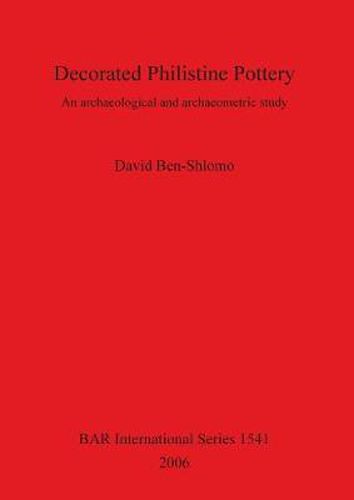Readings Newsletter
Become a Readings Member to make your shopping experience even easier.
Sign in or sign up for free!
You’re not far away from qualifying for FREE standard shipping within Australia
You’ve qualified for FREE standard shipping within Australia
The cart is loading…






This title is printed to order. This book may have been self-published. If so, we cannot guarantee the quality of the content. In the main most books will have gone through the editing process however some may not. We therefore suggest that you be aware of this before ordering this book. If in doubt check either the author or publisher’s details as we are unable to accept any returns unless they are faulty. Please contact us if you have any questions.
This study concentrates on Philistine decorated pottery, its production centres and trade patterns. These issues are examined by both archaeological and archaeometric approaches. Over recent years, a considerable amount of data has been accumulated on Philistine sites, especially from the excavations at Tel Miqne-Ekron, and the new excavations at Ashkelon and Tell es-Safi. Thus, although a vast literature already exists on the Philistines, their material culture and related issues, there has been very little study that systematically combines all this data. This work examines the Iron Age Philistine material culture in general and the Philistine pottery in particular, from a holistic approach. The Philistine phenomenon is defined and described in Part 1 from its various aspects: the historical background, the archaeological evidence and its social and ethnic aspects. Part 2 describes and discusses the updated archaeological evidence of pottery production and workshops in the southern Levant during the end of the Late Bronze Age and the Iron Age. Ethnographic research is utilized to describe the pottery production sequence, technological aspects and modes of production and distribution of pottery. As this work is a provenance study of a geographically andgeologically limited area a methodological discussion was called for presented in Part 3. In Part 4 the archaeometric results are presented. Part 5 combines the archaeological and archaeometric results and evaluates them from a broader cultural, technological and historical perspectives.
$9.00 standard shipping within Australia
FREE standard shipping within Australia for orders over $100.00
Express & International shipping calculated at checkout
This title is printed to order. This book may have been self-published. If so, we cannot guarantee the quality of the content. In the main most books will have gone through the editing process however some may not. We therefore suggest that you be aware of this before ordering this book. If in doubt check either the author or publisher’s details as we are unable to accept any returns unless they are faulty. Please contact us if you have any questions.
This study concentrates on Philistine decorated pottery, its production centres and trade patterns. These issues are examined by both archaeological and archaeometric approaches. Over recent years, a considerable amount of data has been accumulated on Philistine sites, especially from the excavations at Tel Miqne-Ekron, and the new excavations at Ashkelon and Tell es-Safi. Thus, although a vast literature already exists on the Philistines, their material culture and related issues, there has been very little study that systematically combines all this data. This work examines the Iron Age Philistine material culture in general and the Philistine pottery in particular, from a holistic approach. The Philistine phenomenon is defined and described in Part 1 from its various aspects: the historical background, the archaeological evidence and its social and ethnic aspects. Part 2 describes and discusses the updated archaeological evidence of pottery production and workshops in the southern Levant during the end of the Late Bronze Age and the Iron Age. Ethnographic research is utilized to describe the pottery production sequence, technological aspects and modes of production and distribution of pottery. As this work is a provenance study of a geographically andgeologically limited area a methodological discussion was called for presented in Part 3. In Part 4 the archaeometric results are presented. Part 5 combines the archaeological and archaeometric results and evaluates them from a broader cultural, technological and historical perspectives.